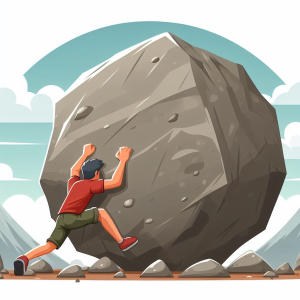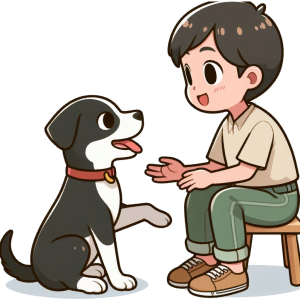

Blog Series : Previous Articles
Did you miss the previous blogs in this series?
So if you have read my previous posts in this series, you know how to get moving and maintain speed. Now you are worried about falling. All of us feel that way to start. However, the best way to get over this fear is to plan ahead and watch out for roadblocks which are likely to knock you off your feet. Take a risk management approach.
When I am at the skating rink, I am performing risk management constantly.
- Child with rental skates – high risk, moderate likelihood
- Parent on the rink with camera – medium risk, low likelihood
- Parent on skates pushing a pram – low risk, low likelihood.
- Child under 10 taking on the half pipe and confident in skates – High risk, High likelihood. It is almost a guarantee they will take you out, or someone near you out which will drag you down too.
When it comes to digital accessibility we should be doing the same. So lets look at some of the common roadblocks, how to risk assess them and lessen the impact when you run into them.
Roadblocks
Roadblocks mostly fit into 4 categories.
- Little F-ing rocks
- Big F-ing rocks
- Dogs
- Basketballs
Yeah it sounds weird but bear with me and my metaphors.
Little F-ing Rocks (LFRs)

LFRs are those cute little rocks that were easy to overlook. They make you stumble and sometimes fall but they are not the biggest concern. You can get back up, wipe yourself off, tend your injuries and get moving again. These LFRs look like
- Lack of Stakeholder engagement
- Budget (too big or too small, both are just as dangerous)
- Tools
- Lack of knowledge
LFRs you can recover from quickly and the best way to do so is through learning and training.
While they may not seem like it these are minor issues, they can feel kind of embarrassing because you didn’t predict it, kind of like falling while skating and flashing your undies.
How to recover from LFRs
Arm yourself with knowledge, apply it and the embarrassment will slowly fade ways. Same way in agile delivery you run a retro, do the same for your accessibility. Record what worked, what didn’t and then focus on what to do to improve.
- Redefine your budget
- Forget about sunk costs and pivot to tools better suited to your environment
- Start an accessibility book club where everyone shares a book, blog or podcast they like and review one together.
- Host an experience lab
Get creative, have a bit of fun and before you know it you will have forgotten the embarrassment of getting a little derailed by a common small problem.
Big F-ing Rocks (BFRs)

These are those massive boulders sitting in your path that you should have seen coming but somehow completely missed them. No swerving around this thing. These are rocks that when they hit, they hurt. 5/5 on the “ouch-o-meter.” Full on, anxiety inducing roadblocks!
- The pole you just skated into at high speed (how the heck did I not see that?).
- The giant pothole which obviously has legs and moved into my path at the last minute.
- The 3 year old on a bike moving at a rather alarming rate.
In digital accessibility these anxiety inducing roadblocks are:
- Lawsuits
- Burnout and attrition
- Marketing
and the associated customer satisfaction loss due to these roadblocks.
Does it feel like the temperature just raised 30 degrees? Starting to sweat a bit? Got shaking hands? Yep this is the feeling of roadblock anxiety. These were those risks you talked about but never thought they would actually happen, or maybe just put them into the “too hard” basket.
Preventing BFR’s
Damage Control
Do that risk management. Plan for the worst, hope for the best and hopefully land somewhere in the middle. Every organisation has a risk management plan for items like security, accessibility should be the same.
Create a plan, review it each month and when you are calm because “everything is going fine”, document strategies to recover should the issue arise. When the issue does arrive, make sure you implement your recovery strategy and not just hope for the best.
Celebrate the wins

Burning out and loosing talent is a significant risk when you work in accessibility. It is a job which never ends because accessibility keeps evolving and we should always be looking at ways to improve your customers experience.
No one can keep skating forever. At some point you need to rest. Make sure you celebrate success with the team and remember success does not need to be perfect. Perhaps this release we reduced accessibility issues by 3%, that is improvement and that it fantastic! Perhaps you shipped code with no “high” impact issues. Maybe business stakeholders called you during design and asked accessibility questions. Even the smallest wins you need to celebrate. If you or your team are waiting for perfection, you will be waiting forever and it will be exhausting. Don’t let your people burn out.
Investment

Marketing. The marketing teams can make or break accessibility. It doesn’t matter how mature your accessibility program is, if your marketing and advertising material is not accessible, no one with disabilities is even going to try to use your product. Get the marketing team on side and grow your customer base.
Dogs

Dogs are remarkable creatures. They are very cute, happy to see EVERYONE, love to make friends, but then when you least expected it, vomit in your slipper.
I skate outdoors a lot. And let me tell you, you have not known fear until a giant off-lead dog runs after you while you are on skates and you dare not stop because the cute thing which was happily playing with a ball a minute ago, has just started channelling the attitude of Cujo from Stephen King’s novel.
Dogs are hard to shake! In the accessibility space they come in the form of
- Overlays
- AI
- One line code correctors
- A combination of all the above
At some point you will be sold overpriced, under performing products. Just like their four legged furry counterparts, they are cute, friendly, promise to solve all your problems and bring you joy. Just never forget they have teeth! They won’t solve all your problems and they are going to throw a few different problems at you which you hadn’t seen before. You might end up holding a disgusting slipper.
Manoeuvring around dogs the cutest roadblocks
Everyone at some point has an encounter with a dog.
I don’t think I have worked with any companies who at some point has not invested in one of these overpriced, under performing tools. Unfortunately the people who buy these tools are not usually the people leading the accessibility program. So even if you know they are bad they will still show up. So rather than avoiding the problem, let’s focus on manoeuvring around it.
Don’t feed it

How these things usually go, is you buy one product and the version you have doesn’t do exactly what you thought it would. Suddenly you are being offered upgrades (for a price), additional tools (for a price), Supported help lines (for a price).
If you find a stray dog, it doesn’t matter if you feed it a $1 can of dog food or a $10 can of dog food. Once you start feeding it, it is a lot harder to get rid of it.
So if you find a stray dog and you didn’t want a dog, don’t feed it. Feeding it is not going to change it into a cat. If you buy a piece of technology which isn’t what you wanted and doesn’t do what you want it to do then don’t continue to buy add-ons. It is not going to change the fundamental problem. It is still a dog.
Teach it to obey

Is the tool trying to do 100 things and doing them all poorly? Cut back what you are asking it to do. Use it for one thing and get to the point when both the tool and the team can work together on that one thing. A dog trainer once told me, most of the time it’s not the dog that needs training, it’s the owner. It is sad, but it’s true. Both dogs and technology do not think like the average human, so you need to figure out how to work together to get the best outcome.
The most important lesson about dogs
Don’t beat yourself up when you make an unwitting mistake, it happens. Work with what you have, but please, whatever you do, do not buy a second dog!
Basketballs

So I mentioned I skate outdoors a lot. One of the places I like to skate is at some basketball courts near my house. There is plenty of courts to go around but seriously, basketballs go rogue.
Basketballs end up bouncing all over the place and it seems everyone owns it right up until it takes out someone roller-skating from behind. It’s a risk of the area. At some point that basketball you didn’t see coming is going to hit and you are faced with two options.
- Fall. You lived a good life. It was not your fault.
- Do some magic pirouettes and crack out your Harlem Globe Trotters moves.
In the digital accessibility space, think of basketballs as
- Laws
- Best Practice
- Standards
These are things which when they change can be quite disruptive but you don’t know exactly when they are going to hit. For example WCAG 2.2 seemed like it was “almost ready for release” for about 2 years, then suddenly it was here, when we had stopped expecting it.
How do you avoid basketballs?
The secret to avoiding basketballs is making friends with the owners. Find out their schedule, share information with them and be friendly. Someone who likes you, is going to want to share information with you and try not to smack you in the face with it.
- Get in the working groups such as WCAG 3.0/Project Silver
- Get involved with your countries accessibility professional organisation like OZeWAI or their W3C or IAAP chapter
- Follow lots of accessibility and digital news advocates
- Be prepared for impact. Drafts are often released early, work from the drafts assumptions before the “official” launch dates.
Summary
Roadblocks will happen, sometimes they can’t be avoided, you can reduce the impact if they occur but sometimes roadblocks just happen.
| Roadblock | Actions to lessen the impact |
|---|---|
| LFRs (Stakeholders, Budget, tools, lack of knowledge) | Quick wins, training, tight scope |
| BFRs (Lawsuits, burnout, attrition, poor customer satisfaction) | Risk Management (Damage control), Investment and celebrate the wins |
| Dogs (Overlay’s, AI, One line code fixes) | Research before you buy. Don’t feed it. Work with it where you can. Don’t buy another dog! |
| Basketballs (Standards, Laws, Best Practice) | Involvement in wider community, network and contribute |
Where to now?
So you have the basics down, you know what roadblocks to watch out for and how to manage them when you encounter them. What are the next steps? Maintenance.
If you don’t maintain your skates, regularly cleaning, oiling and checking for damage they are going to be less efficient and eventually wear out. If you don’t regularly maintain your accessibility program the same will happen, it will become ineffective and it will break down.
Check out the next blog in this series (Coming Soon) on regular maintenance.
